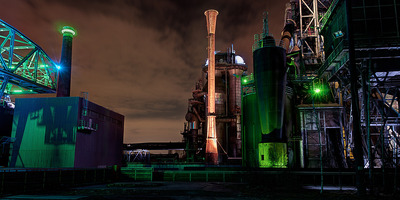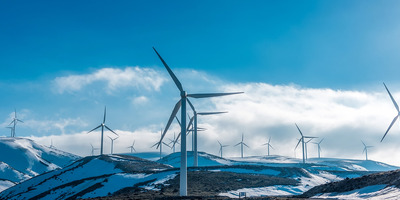All you need to know about Oil and Gas Companies
All you need to know about Oil and Gas Companies
Global economies and infrastructure continue to rely heavily on petroleum-based products, increasing the world's reliance on oil and gas companies. Even in the face of a weakened global economy and declining energy reserves. The oil and gas industry continues to have enormous influence in international economics and politics.
Natural gas is the most commonly used commodity. Natural gas accounts for about one-third of our overall energy consumption and is the fastest-growing and cleanest-burning fossil fuel. Unless you're an industry expert, there's a fair chance you don't know much about Oil and gas companies beyond the basics. Continue reading to learn more about the fossil fuel on which we have become so reliant.
Using Reviews to Find the Best Oil and Gas Companies
There are different categories of companies in the energy service company industry, the Oil and gas companies are one major branch of the sector. Choosing a Gas company might be a little difficult, you can use customers reviews to find the best Gas companies, you can also find reviews about other energy services companies
What is Gasoline?
According to dictionary.com, Gasoline is a volatile, flammable liquid mixture of hydrocarbons, obtained from petroleum, and used as fuel for internal-combustion engines, as a solvent.
What Is Natural Gas?
Natural gas is defined as “a combustible mixture of gaseous hydrocarbons that accumulates in porous sedimentary rocks, particularly those yielding petroleum, consisting typically of over 80% methane with minor amounts of ethane, propane, butane, nitrogen, and, rarely, helium,”. That’s too much to digest at once. Let’s break down all the information into something a little easier to understand.
What Main Types of Gas Make Up Natural Gas?
Four gases occur naturally and they create natural gas when mixed in the right proportion. The first four alkanes — methane, ethane, butane, and propane — are known as the four natural gases. The alkanes which make up natural gas, have a lot in common. All these gases are colourless, odorless, and flammable. They do have different molecular structures and applications.
What Are the 4 Natural Gases?
1. Methane
Methane, a non-toxic substance, is the predominant component of natural gas, responsible for more than 80% of the total. Since methane has no odour, odorous sulfur compounds are applied to it when it is used as a gas so that leakage can be observed. Methane gases are released into the atmosphere after they are burnt, where they become greenhouse gas.
2. Ethane
Ethane is the second-largest fossil fuel portion, accounting for 1 percent to over 6% of the natural gas mixture. Ethane, like methane, is a greenhouse gas, but on a much smaller scale.
3. Propane
Propane is found in small quantities in the natural gas mixture. Grills, portable stoves, vans, taxis, forklifts, and recreational vehicles all use it as a source of gasoline. We also use propane for appliances like furnaces, clothes dryers, and water heaters. Propane combustion is not as pure as natural gas combustion, but it is considerably safer than gasoline combustion.
4. Butane
While we think of butane as odorless, it does have a mild, irritating odour that reminds us of petroleum. Butane is a flammable gas that is readily liquefied. Butane is a minor portion of natural gas, but it's best known for its uses in cigarette lighters, blowtorches, and portable stoves, as well as as an aerosol propellant, refrigerant, and heating fuel.
How Are Gas and Natural Gas Different?
Natural gas and gas are not the same. They may have the same name, but they are somewhat different, almost like a nocturnal flying bat and a baseball bat.
The top four distinctions are as follows:
- Natural gas is used to fuel our homes, prepare our meals, and generate electricity. Gas or gasoline (also known as petrol) is mostly used as a vehicle engine fuel since it is a product of petroleum and crude oil.
- Natural gas releases almost 25% less carbon dioxide than oil, making it a more environmentally friendly fuel.
- Gasoline is a liquid in its natural state, whereas natural gas is a gas.
- Even though they are both made of hydrocarbons, natural gas has fewer atoms than gasoline.
Types of Oil and Gas Companies in Canada
Like other regions, Oil and Gas companies in Canada are split into three major segments.
Upstream
Companies engaged in the discovery and development of oil and gas are known as upstream enterprises. These are the businesses that scour the globe for raw material deposits and then dig to remove the material. These firms are also referred to as "E&P" corporations, which stands for "exploration and production." The upstream sector is marked by high risks, high investment capital, long term (due to the time it takes to locate and drill), and technical complexity.
Midstream
Businesses that are based on transportation are known as midstream. They oversee transporting the extracted raw materials to refineries where the oil & gas are processed. Shipping, trucking, pipelines, and raw material handling are also features of midstream companies. High control, especially in pipeline transmission, and low capital risk characterize the midstream sector. The success of upstream companies has a natural impact on the segment.
Downstream
Refineries are downstream companies. They are the businesses in charge of extracting impurities and turning oil and gas into consumer goods like diesel, jet fuel, cooking oil, and asphalt.
Conclusion
The world still relies on Oil and Gas companies, even though other options like Green energy have started gaining acceptance by energy users. However, before choosing Oil and Gas companies to patronize, you must be equipped with the necessary information. Use reviews by other customers of the Oil and Gas companies to know which of them offers the best products and services.
By
Mo
More Energy

Steps Every Small Business Should Take To Save Money on Energy Bills
Saving money on your energy bills is important for any business, no matter how big or small. This blog post will discuss some tips that every small business can take to help reduce their expenses. Implementing even a few of these suggestions can result in significant savings over time.

All you need to know about energy service companies
Energy Service Companies are becoming more popular, but many people are still unaware of what they offer. Make no assumption: Read everything you need

Things to know before choosing green energy stocks
There are several reasons to be enthusiastic about advancements by green energy companies: See what green energy stocks are and how to choose

Understanding and Finding best electric companies
This article contains the information you need before choosing an electric company, read the article about the best electric companies to know more